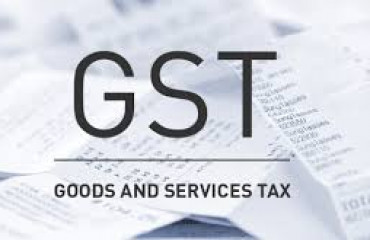
There still exists scope to widen the tax base in the northeast if officials focus on bringing more small and medium enterprises, traders and other businesses within the ambit of the GST, the minister said.
There still exists scope to widen the tax base in the northeast if officials focus on bringing more small and medium enterprises, traders and other businesses within the ambit of the GST, the minister said.
 Premium
PremiumNew Delhi: The eight northeastern states have seen a robust growth in the Goods and Services Tax (GST) collection, which has seen about 27.5% annual revenue growth since its implementation leading to a marked increase in the resources of these states, finance minister Nirmala Sitharaman said on Friday.
Speaking at the Central Board of Indirect Taxes and Customs (CBIC) Investiture Ceremony at Guwahati, Sitharaman said that Assam's central sales tax collection prior to the implementation of the GST stood at ₹558.26 crore during 2016-17, and its IGST collection increased manifold to ₹7,097 crore (FY 23).
Similarly, Sikkim and Meghalaya registered a significant achievement with collections increasing from ₹263.5 crore to ₹3,136 crore and ₹587.21 crore to ₹2,078 crore, respectively, she said.
"The GST is a symbol of what post-independence India can do towards building a constitutional mechanism just so that the center and state work together to improve revenues," Sitharaman said. "Also, make sure that the distribution of money is done in an acceptable formulation between the center and state."
Interestingly, Assam was the first state to ratify the GST Act, four days after it was passed.
Since then there has been a 12 times increase in the collection of taxes in the state, Sitharaman said.
"The GST's principal largely is on the basis of tax and consumption not just tax on the basis of where it is produced. As a result, unlike the central sales tax, which is the origin base tax, GST is a destination-based tax...and the northeastern states have benefited from the GST," Sitharaman said.
"As a result, the northeast consuming states have shown remarkable improvement in the GST collection and also the quantum that goes back to the states in the name of distribution that happens," she added.
She added that there still exists scope to widen the tax base in the northeast if officials focus on bringing more small and medium enterprises, traders and other businesses within the ambit of the GST.
Meanwhile, the North East, which has borders with four countries and covers about 7.75% of the country's borderline, has only 25 functional Land Customs Stations (LCS), out of which only 15 have electronic facilities.
The remaining LCSs should have electronic facilities by December, to help detect and stop smuggling, she added.
